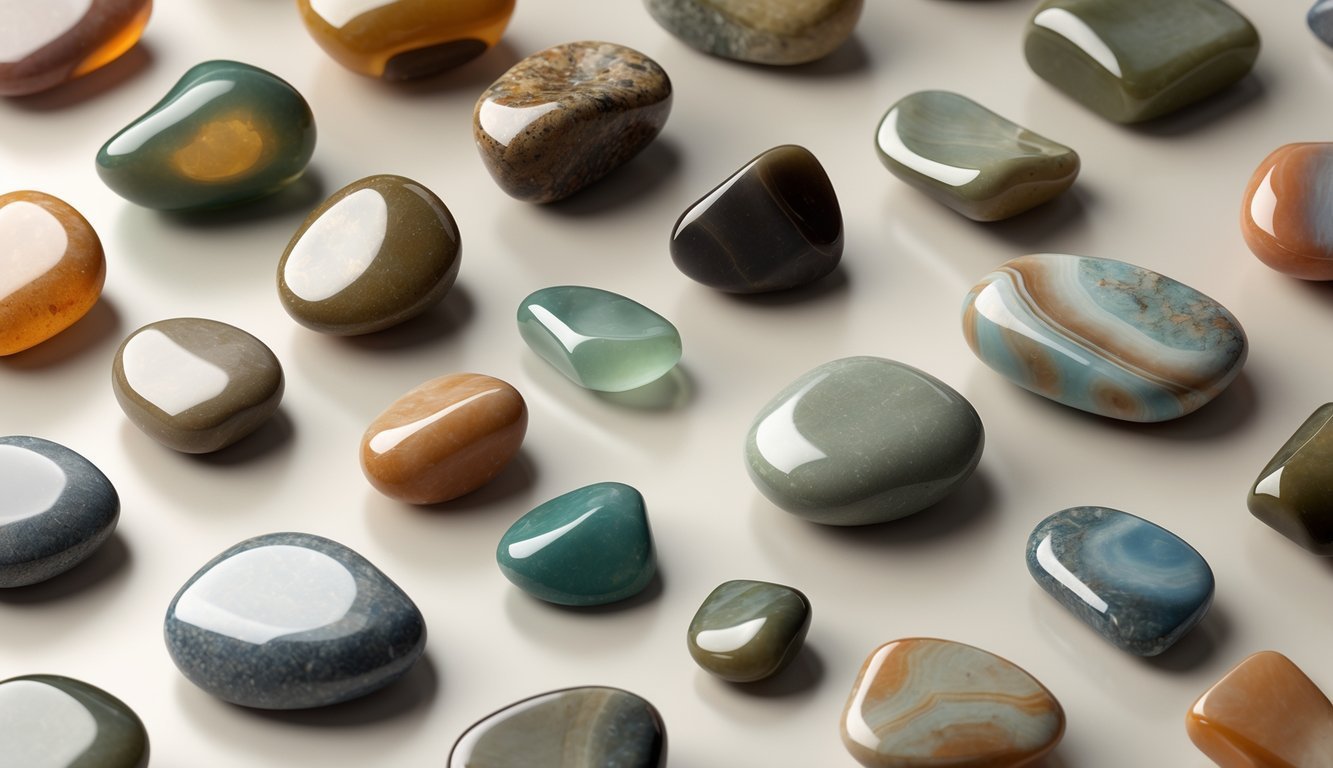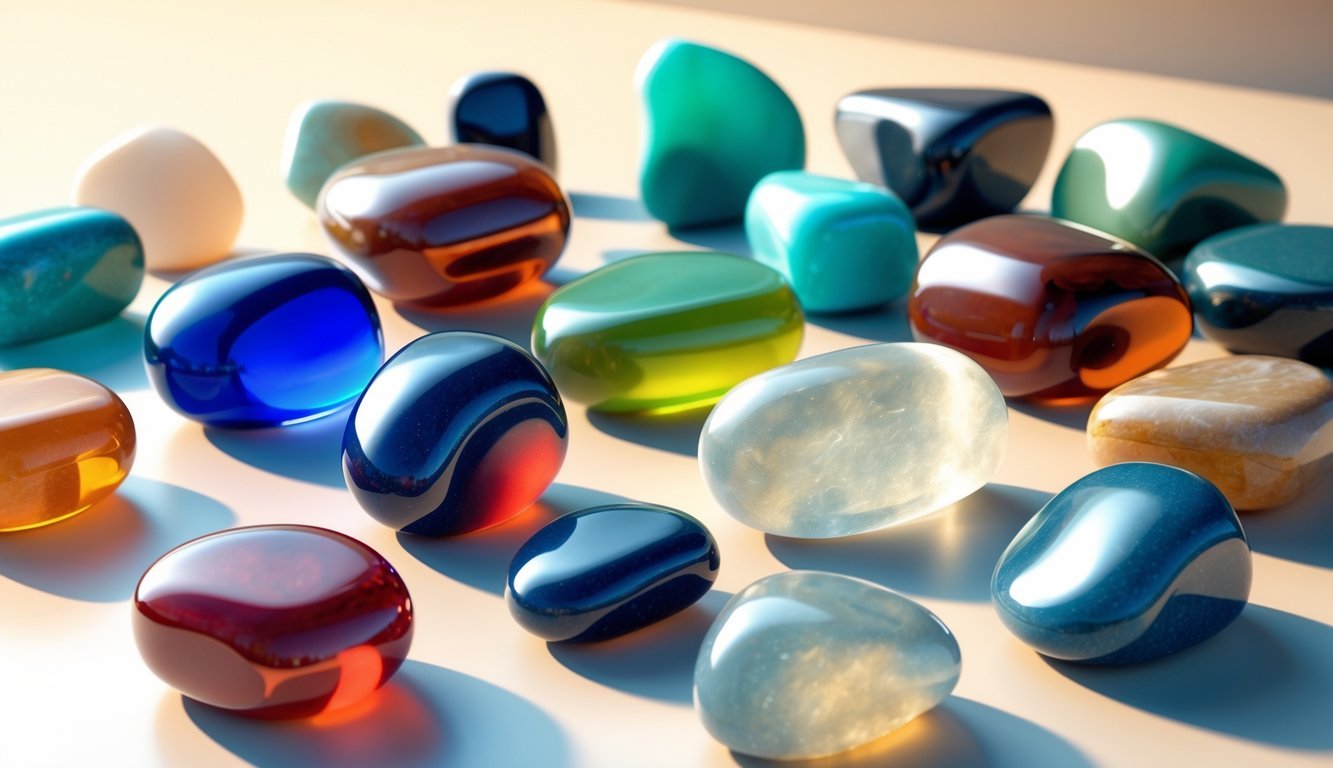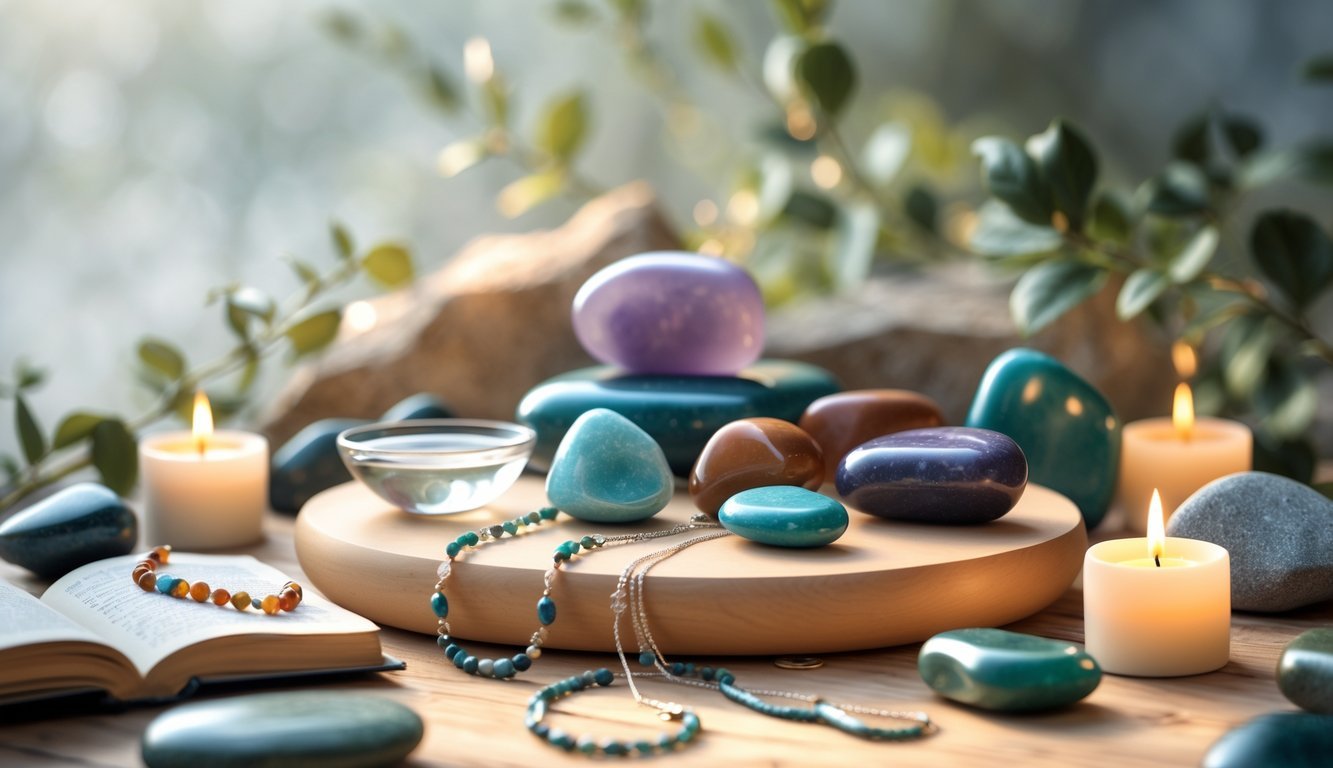PsychNewsDaily Publishers
100 Summit Drive
Burlington, MA, 01803
Telephone: (320) 349-2484
PsychNewsDaily Publishers
100 Summit Drive
Burlington, MA, 01803
Telephone: (320) 349-2484
Tumbled stones are smooth, polished rocks created by tumbling rough stones in a machine, enhancing their natural beauty and making them popular for crafts and decoration.

Tumbled stones are smooth, polished rocks that keep their natural shape but look shiny and colorful. People make them by gently tumbling rough stones in a machine, which wears down sharp edges and brings out their beauty.
Collectors love tumbled stones because they’re easy to find, fun to use in crafts, and simple to carry as tiny pieces of nature.
You’ll spot them in jewelry, as decorations, or even in relaxation and healing routines. Their small size and smooth feel make them perfect to hold or just display on a shelf.
Whether you’re brand new to stones or you’ve been collecting for years, tumbled stones offer a super simple way to enjoy nature’s beauty.
If you like hands-on projects or want a natural touch in your home, these stones are a solid pick. They come in so many types and colors that there’s probably one for every mood or style.

Tumbled stones are small, smooth rocks or minerals that feel great in your hand and look beautiful. A special process polishes them, turning rough, natural shapes into shiny, smooth gems.
You’ll find all sorts of colors, shapes, and patterns—each stone’s got its own unique vibe.
People use many kinds of rocks and minerals for tumbling, each with a different look and feel. You might spot them as decorations, in crafts, or just as part of a collection.
Let’s check out how people make them, which stones work best, and what makes them so interesting.
A rock tumbler does most of the work. People fill a barrel with rough stones, water, and some abrasive grit, then let the tumbler spin the barrel around.
The stones rub against each other and the grit, which smooths out sharp edges and rough spots.
After a few rounds with finer and finer grit, the stones get really smooth. The last step uses a polishing powder to make them shine.
This whole thing can take weeks, honestly. It’s a process: tumbling, rinsing, drying—over and over.
Each stage matters if you want that awesome, polished finish.
Some favorites for tumbling include:
Others people like are lapis lazuli, carnelian, citrine, sodalite, and jasper. These stones polish up nicely and show off great colors and patterns once finished.
You might even tumble fossil stuff like petrified wood or turritella fossils—kind of a neat way to add some ancient history to your collection.
Tumbled stones have a smooth, rounded shape with no sharp bits. They feel cool and pleasant in your hand.
A polished surface brings out the stone’s natural color and patterns.
You’ll see all kinds of colors—bright reds, greens, soft pastels, deep blues. Bands, swirls, and stripes pop out after polishing.
Some stones get dyed to make their colors brighter or to create special effects. Sometimes you’ll spot tiny pits or lines—little reminders of how the stone formed before tumbling.
People make tumbled stones from all sorts of minerals and rocks. Most are crystals or crystalline quartz, but there’s more variety than you might expect.
Some, like labradorite and moonstone, have special shiny flashes. Others, such as malachite and chrysocolla, stand out with bold greens and blues.
You might even run into stones like unakite, prasiolite, or dalmatian stone, each with its own look and mineral mix.
With so many types, you can pick from a huge range of colors, textures, and hardness levels—great for tumbling or just collecting.

Tumbled stones are small, smooth, and polished rocks that fit into your life in a bunch of ways. They add color and texture whether you wear them, display them, collect, or trade.
It’s easy to turn tumbled stones into jewelry—necklaces, bracelets, earrings, you name it. Their smooth surfaces feel nice and work with all kinds of styles.
You can buy ready-made pieces or try making your own with loose stones.
Tumbled stones also work for keychains, pins, or other small accessories. They’re a simple way to keep a bit of nature close by.
Pick stones by color or meaning—whatever feels right for you.
Tumbled stones brighten up a room. Fill a glass vase with them, scatter them on a shelf, or use them as table accents.
They look great in potted plants too, covering soil and adding a pop of color.
Some people use tumbled stones as game markers or in crafts. You could make mosaics or decorate picture frames with them.
Their polished look fits almost any style, really.
If you’re into collecting, tumbled stones are easy to add. People buy or trade them to build up a variety of colors and types.
It’s fun to learn how to spot different minerals and appreciate their unique features.
You might give small tumbled stones as gifts or keep a few in your pocket as tokens from a trip.
It’s a simple way to stay connected to nature and share your interest with others.
Shops and online sellers always seem to have tumbled stones for sale. You’ll find them by weight or in mixed sets.
Sellers usually sort them by type, color, or size to make picking easier.
If you want to trade, local rock clubs or online groups are great places to connect. Trading helps you swap extras or find rare stones for your collection.
It’s a fun, low-cost way to discover new favorites.

You can use tumbled stones in all sorts of ways. If you look closely at their shapes and colors, you’ll start to recognize different types.
Buying wholesale saves money, but not every stone is good for tumbling. Knowing how to tell tumbled stones from natural crystals means you’ll pick better pieces.
Value depends on size, color, and quality.
You can make necklaces, bracelets, and earrings with tumbled stones. Their smooth shape makes them easy to wire-wrap or set in bezels.
Since they’re small and polished, tumbled stones fit both delicate and bold jewelry designs.
Check out the stone’s color, pattern, and texture. Some stones have unique markings or shades that make them stand out.
Comparing your stone to photos in guides or using apps can help with identification.
Buying in bulk usually means you pay less per stone. You get more variety if you’re crafting jewelry or building a collection.
Wholesale is a good choice if you need lots of stones that are similar in size and quality.
Soft stones like gypsum and selenite often get scratched or lose their shine in a tumbler. Fragile stones can crack or fade.
Harder stones, such as quartz, handle tumbling better and keep their polish.
Tumbled stones are smooth and rounded from polishing. Natural crystals usually have sharp edges and rougher surfaces.
You’ll often see clear geometric shapes in natural crystals, unlike the even polish of tumbled stones.
Size definitely plays a big role, and so does how bright the color looks. If a stone shines with a great polish quality, that usually boosts its value.
People tend to pay more for stones that don’t have cracks or blemishes. Rare stones or ones with unique colors? Those can get pretty pricey too.